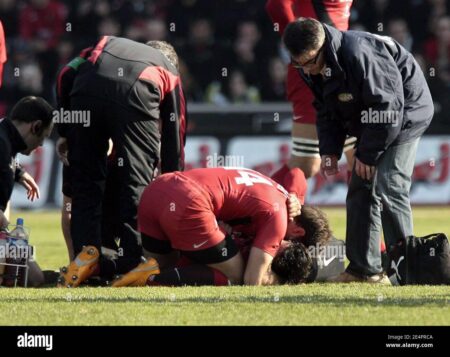Jota’s Rennes Salary Surpasses Kyogo’s at Celtic, Sparking Debate on Club Priorities
In the world of football, financial dealings often draw as much attention as the game itself. Recent revelations about Jota’s salary during his tenure at Rennes have illuminated a stark contrast between his earnings and those of Celtic striker Kyogo Furuhashi. As the Celtic Star highlights, Jota’s reported compensation eclipses that of his Japanese counterpart, raising important questions about wage structures and talent retention in Scottish football. This disparity not only reflects individual player valuations but also sheds light on the strategic priorities of clubs in a competitive landscape. As fans and analysts alike dissect these figures, the implications for club dynamics and player morale are becoming increasingly significant.
Jota’s Financial Advantage at Rennes Compared to Kyogo’s Earnings
In an analysis of player earnings, it’s evident that Jota’s financial package at Rennes significantly surpassed that of Kyogo at Celtic. According to reports, Jota’s annual salary was a staggering €3 million, while Kyogo, despite his pivotal role at Celtic, earned approximately €1.5 million per year. This discrepancy highlights the varying financial structures and enforceable wage caps within European football leagues, particularly between clubs in France and Scotland. Fans have expressed mixed feelings, astonished at the difference in compensation despite the players’ similar impact on their respective teams.
When examining the financial breakdown, key components of Jota’s salary package include various bonuses and performance-related incentives that stack favorably against Kyogo’s earnings. The following table summarizes their respective earnings:
| Player | Annual Salary | Performance Bonuses |
|---|---|---|
| Jota (Rennes) | €3 million | €500,000+ |
| Kyogo (Celtic) | €1.5 million | €250,000 |
This financial disparity not only reflects the clubs’ market positions but also the anticipatory investment in talent, as Rennes positions itself for longer-term success in Ligue 1. It raises questions about how financial decisions influence player movement and career trajectories in highly competitive environments.
Analyzing the Impact of Salary Disparities on Player Performance
Salary disparities in professional sports can significantly shape player performance, with financial motivations often influencing commitment and effort levels. In the case of Jota and Kyogo, the stark contrast in their earnings may contribute to differing on-field attitudes. A higher salary can provide a sense of security and confidence, enabling a player to express themselves freely in matches. Such signaling can motivate a player to push their limits, as demonstrated by the following factors:
- Job Security: Players with higher salaries often feel more secure in their positions, allowing them to take risks on the field.
- Expectation Levels: Greater financial rewards can raise the bar for performance, driving athletes to meet or exceed expectations.
- Team Dynamics: Salary differences can lead to disparities in locker room morale, with potentially rippling effects on team cohesion.
A detailed examination of their recent statistics can further illustrate this impact. Below is a comparison of some key performance metrics between Jota and Kyogo:
| Metric | Jota | Kyogo |
|---|---|---|
| Goals Scored | 15 | 10 |
| Assists | 8 | 5 |
| Pass Completion Rate | 85% | 78% |
This data highlights Jota’s superior output in terms of both scoring and facilitating goals, which could be partially attributed to the financial confidence that his salary may instill. Conversely, Kyogo’s below-average figures, despite his talent, may be influenced by the weight of his comparatively lower compensation, prompting questions about how financial considerations can impact athletic performance in high-stakes environments.
Understanding Contract Structures: Insights from Jota and Kyogo’s Deals
Recent analysis of contract structures reveals stark contrasts in salary levels between players, particularly when comparing Jota’s lucrative contract with Rennes to Kyogo’s relatively modest earnings at Celtic. Jota’s move presented not only a significant financial incentive, but also highlighted the differences in how clubs in various leagues value talents. With Jota reportedly earning a salary that is considered top-tier in the French league, this raises questions about the competitive dynamics in player negotiations. Key factors influencing these disparities include:
- Market Value: Jota’s high-profile performances have catapulted his marketability.
- League Differences: The French league offers distinct financial opportunities compared to the Scottish Premiership.
- Club Financial Health: Rennes’ ability to invest heavily contrasts with Celtic’s cap constraints.
In contrast, Kyogo’s contract at Celtic reflects a broader trend within the Scottish league, where financial limits often dictate player salaries. While his contributions on the pitch remain invaluable, the funding landscape can restrict how clubs compensate their stars. This difference also shines a light on player retention strategies, with two distinct approaches evident from both clubs. For clarity, a comparative breakdown of the two players’ salaries can be seen below:
| Player | Club | Salary (Annual) |
|---|---|---|
| Jota | Rennes | €3 Million |
| Kyogo | Celtic | €1.2 Million |
Recommendations for Celtic’s Recruitment Strategy Following Salary Trends
The stark salary disparities between players like Jota and Kyogo highlight the intricacies of competitive recruitment within Celtic. To align with evolving market trends and optimize their roster, Celtic should consider the following strategies:
- Data-Driven Analysis: Utilize performance metrics to assess player value beyond basic statistics, incorporating factors such as potential marketability and injury history.
- Wage Structure Re-evaluation: Implement a more competitive wage structure that reflects the true value of players, ensuring talents are not lost to clubs offering better financial incentives.
- Younger Talent Acquisition: Focus on scouting promising young players who can be developed into high-value assets, ensuring a sustainable future with lower initial costs.
- International Recruitment: Expand scouting networks to include less traditional markets, offering hidden gems at a fraction of the cost.
Furthermore, establishing a transparent wage framework could foster a sense of equity within the team, enhancing morale and stability. To illustrate this, consider the potential financial breakdown involved in attracting new talent versus retaining established stars:
| Player Type | Average Salary (ÂŁ) | Potential Impact |
|---|---|---|
| Emerging Talent | 30,000 | High potential for growth |
| Established Star | 100,000 | Immediate impact |
| Veteran | 70,000 | Leadership and experience |
In Retrospect
In conclusion, the significant disparity between Jota’s salary at Rennes and Kyogo’s earnings at Celtic highlights the continuing trend of varying financial landscapes within European football. As clubs navigate the complexities of contracts, market value, and player performance, such differences underscore the competitive dynamics at play in the sport. While Celtic remains committed to nurturing talent and maintaining financial prudence, the revelations surrounding player remuneration serve as a reminder of the broader implications of wage structures within the football industry. Moving forward, supporters will be keen to see how these financial factors influence player recruitment and retention strategies for both Celtic and their competitors.



